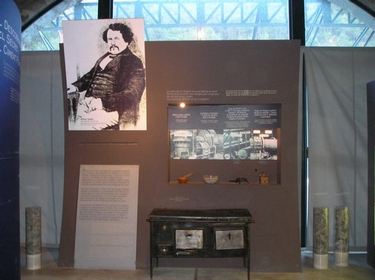From cement factory to cement museum
Industrial Revolution caused a wave of new buildings unprecedented in Europe.
Towns with tunnels, ports, bridges and defences sprang up everywhere. Researches to find out an hydraulic mix more resistant and rapid than lime was going on. By 1977 many cement patents were issued in England and in 1824 a mason, Joseph William Aspdin, patented a type of cement called Portland. In 1843 his son discovered a process to manufacture a higly innovatory cement, stronger than any other cement of the day. He protected his discovery with the same name patented by his father.
Towns with tunnels, ports, bridges and defences sprang up everywhere. Researches to find out an hydraulic mix more resistant and rapid than lime was going on. By 1977 many cement patents were issued in England and in 1824 a mason, Joseph William Aspdin, patented a type of cement called Portland. In 1843 his son discovered a process to manufacture a higly innovatory cement, stronger than any other cement of the day. He protected his discovery with the same name patented by his father.
 1/11
1/11 
